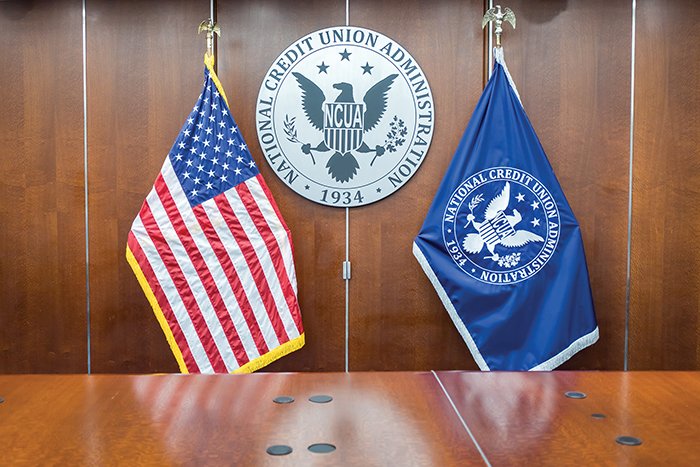 Source: Shutterstock.
Source: Shutterstock.
A "sense of urgency" drove the Mountain West Credit Union Association board's decision to explore a possible merger with the Northwest Credit Union Association that would create the industry's first six-state league serving more than 300 credit unions and their 12.3 million members.
"As credit unions, our business model gives us the gift of time. We cannot let that gift fool us into a myopic view of what we can become," MWCUA Board Chair Todd Marksberry and President/CEO of the $3.6 billion Canvas CU in Lone Tree, Colo., wrote in a letter sent to CEOs. "We are not chasing quarter-to-quarter results. We serve our members and their needs with a longer-term horizon. In 2022, just as we were formed in the 1930s, people across our country need credit unions. To best serve them, we must move with a purpose to advance our legislative needs, better serve our communities, and share our story to engage even more members. We must blast past owning less than 10% of the market."
Recommended For You
Both organizations signed a letter of intent on Jan. 20, which kicked off what has been described as a comprehensive due diligence process conducted by the top leaders from both associations to determine the viability of a consolidation.
 Todd Marksberry
Todd Marksberry Both organizations began talking about a possible merger soon after MWCUA CEO Scott Earl announced late last year his plan to retire in June 2022, which represents credit unions in Arizona, Colorado and Wyoming. The NWCUA represents credit unions in Idaho, Oregon and Washington.
Sharing Marksberry sense of urgency is Troy Stang, NWCUA president/CEO, who would lead the six-state association if approved by both association boards and member credit unions.
"Business isn't like it was when I first started at the Oregon league in 2008. The issues that credit unions are facing, the advocacy issues are coming at a faster pace," Stang explained. "The issues are more complex and credit unions are more complex, and it takes more resources to successfully navigate these advocacy issues. Member credit union members know the strengths of what they've seen with our three-state association. I would say they overwhelmingly get the business model and get how this brings them more value."
 Troy Stang
Troy Stang Because the merger will deepen the "bench strength" for both associations, Stang said there will be no layoffs of the 30 employees who work NWCUA and 23 employees who work at MWCUA.
After the proposed consolidation was publicly announced on Feb. 1, Marksberry felt compelled to send letter to CEOs of MWCUA member credit unions to emphasize the merger's value proposition and to ensure every credit union feels that their voice matters. Marksberry's letter also was shared with NWCUA and was posted on its website.
"What prompted us to write that letter was that we have 11 board members and the vast majority of our credit unions don't necessarily have visibility into that boardroom," he explained. "The feedback we've gotten has been limited, but what's happening is that a lot of credit unions aren't going to necessarily call (me) at Canvas. If they have a relationship with another (MWCUA) board member, they are probably going to reach out to one of them. We've had some of that, and the way we approach it is that every voice matters. It doesn't matter if it's the CEO of the largest credit union or it's the smallest credit union, their voice matters. And we want to hear from them."
Marksberry doesn't anticipate any formal or organized opposition to the proposed merger but he noted that it will be incumbent upon the leadership to take the time necessary to answer any and all questions from member credit unions.
"From the largest credit unions to the smallest credit union, they will want to know what's in it for them. How will this (merger) impact their credit unions, including will it impact their dues? Will it be an adverse impact? Will it be a positive impact? Will they still get access to education and assistance in terms of grants, and the like, so, we're going to really work hard to make sure that everybody feels like they have a voice in this."
The most common question Marksberry has received so far from member credit unions is what will be the make-up of the board of directors for the merged association.
"They want to know that if we go from a three-state trade association to a six-state trade association, will they have the same voice that they currently have?" he said. Aspects of the governance model that are under discussion include how many seats will be available on the board, how many seats will be assigned to each association and to each state to ensure the board maintains a proportional representation for the six states, similar to the existing boards of both associations.
When the associations were discussing the prospects of merging before the due diligence began, Marksberry noted that both sides did not want to move forward with the proposed consolidation unless it offered more services.
"It has to be additive with a stronger voice from an advocacy perspective," he said. "We would have more opportunity in terms of education and assistance for small to midsize credit unions. And we would have definitely have more opportunities to significantly impact our communities by way of the two foundations. We care very, very deeply about small and midsize credit unions and we want to make sure that it ends up being an even better value proposition for them."
When the due diligence report is completed, it will be shared with the associations' boards. The report, however, cannot be publicly released because it will contain confidential information, Marksberry said.
If the due diligence determines a merger will be beneficial, the boards of both associations will encourage their members to vote for the consolidation in the spring. If approved, the merger would become official on or before June 30.
© Touchpoint Markets, All Rights Reserved. Request academic re-use from www.copyright.com. All other uses, submit a request to [email protected]. For more inforrmation visit Asset & Logo Licensing.







